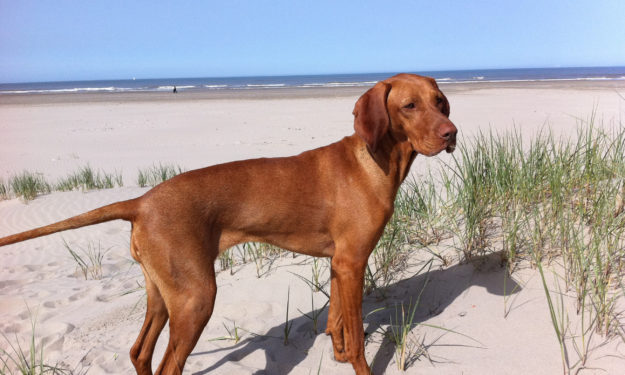Osteochondritis Dissecans (OCD) in Dogs

Osteochondrosis of the shoulder joint is a common cause of lameness in dogs. Fortunately the outcome with surgical treatment is generally excellent when arthroscopy is performed early in life.
What is OCD of the Shoulder?
OCD (osteochondrosis dessicans) is probably the leading cause of osteoarthritis of the shoulder joint. Shoulder OCD occurs when a piece of cartilage separates from the underlying bone. Pain is due to inflammation of the joint and exposure of nerves in the bone under the cartilage flap.
Shoulder OCD in dogs has been demonstrated to be a genetic disease and cannot be caused by diet or exercise although excessive exercise in a dog with untreated shoulder OCD may make the lameness more severe.
OCD of the shoulder is usually found in young dogs ranging from 6 months to 2 years of age.
The clinical sign of shoulder OCD is lameness of one or both forelegs. Dogs with shoulder OCD may have trouble getting up and often have some muscle loss and pain when the joint is moved.
How is Shoulder OCD Diagnosed?
The diagnosis of shoulder OCD is usually straightforward because most lesions are easy to see on radiographs (x-rays) of the shoulder joint. The normal curve of the joint surface is interrupted by a flat area representing the abnormal cartilage.
How is Shoulder OCD Treated?
Treatment of shoulder OCD should be strongly considered by dog owners because surgical removal of the flap almost always results in elimination of the lameness whereas nonsurgical management often results in continued limping and may result in severe osteoarthritis later in life.
Removing the cartilage flap lets the underlying bone heal, stops the irritation of the joint, and keeps the flap from moving into another part of the joint where it might cause other problems. We strongly recommend using arthroscopy to remove the flap to avoid large incisions and for a faster recovery.
Are There Complications?
Complications with arthroscopic treatment for shoulder OCD are very rare (less than 2 percent). The most common complication is swelling of the shoulder that resolves in several days. Anesthetic complications, infection, or nerve damage are very uncommon.
What is the Outcome of Treatment?
The outcome with arthroscopic treatment of shoulder OCD is generally excellent with complete resolution of lameness over several months following surgery. Physical therapy can accelerate the recovery. In most cases there is little residual arthritis which may be apparent after very heavy exercise or as the dog becomes much older.
Arthroscopic Surgery
Arthroscopy is performed by a highly experienced and caring surgical team who prioritize your pet’s welfare. Our philosophy is to educate owners and help them make the best decisions for their pet and their family.
Arthroscopy is an advanced surgical technique for examination and treatment of joint disease. In arthroscopy the surgeon makes a small incision and inserts a pen sized instrument (arthroscope) to work inside the joint. Arthroscopy provides better visualization and greater opportunities for treatment of joint disease while being much less invasive than traditional surgery. Recovery from surgery is quicker, the incision is smaller and in most cases patients will not need to spend the night at the hospital.